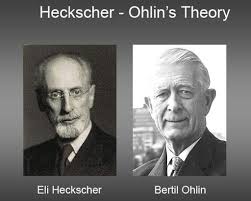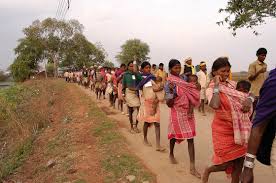The Heckscher-Ohlin theory of International Trade, also called the H-O theory was established by Bertil Ohlin. He derived this theory from the General Equilibrium Analysis of Eli Heckscher. Bertil Ohlin was a Swedish economist and politician. He served as the Minister of Trade for Sweden from 1944-1945. Moreover, he was a professor at Stockholm School of Economics in the early 1900’s.
The theory proposed by him is based on international trade. According to Ohlin, it is the difference of the relative prices of goods between different countries that facilitates trade. Commodities differ in prices on account of differences in costs of production. This further extends to differences in the costs of the factors of production as well. The various factors of production, such as, labour and capital have different costs varying from country to country.
The theory states, “A capital-abundant country will export the capital-intensive good, while the labor-abundant country will export the labor intensive good”.
This means that countries like India that is a labor intensive economy will export goods that are produced by them. However, in the case of countries like Germany a very significant portion of their export will be produced by capital (machinery). The assumptions of this theory are as follows:
- There are two countries that are taken into consideration
- The two countries are equivalent
- There are two factors of production –labour and capital
- The costs of these factors must differ
- They produce two goods –one capital intensive and the other labour intensive
- The two economies follow a perfectly competitive market
- Factors are allowed to move freely within the country. However, have no mobility outside
- The production function is the same for the two countries
- There is full employment in the economy
- Trade is free
- There are no transportation costs
Now the question arises, what determines that a country is labour intensive or factor intensive.
Economists are still not very clear as to what the underlying logic is. There has not been a unanimous acceptance of a particular method, however, most agree on the concept of factor prices. This concept basically says that, if labour is cheaper in comparison to capital in a particular country then that country is said to be labour intensive and vice versa.
This theory has several limitations that validate the fact that it lacks practical/analytical feasibility. Some of them are:
- Impractical assumptions: the theory assumes that there is no cost of production, identical production functions, no qualitative difference in the factors, constant returns to scale, etc –this is not very realistic.
- Many constraints: the theory has too many constraints such as only two countries, two commodities and only two factors of production.
- One-sided theory: supply plays a more significant role as compared to demand.
There have been many instances where this theory has been contradicted. The most important being the Leontief paradox.





17 Comments. Leave new
Well explained 🙂
Very well written!
Informative.
very well written!
Very interesting and informative.
Informative 😀
You have explained the theory very well
You have explained the theory very well
Good work.
Great effort and very informative.
🙂
Explanatory:)
informative one…
nice 🙂
Informative
Informative!
That’s interesting!
An articulated work that unfolds neatly.